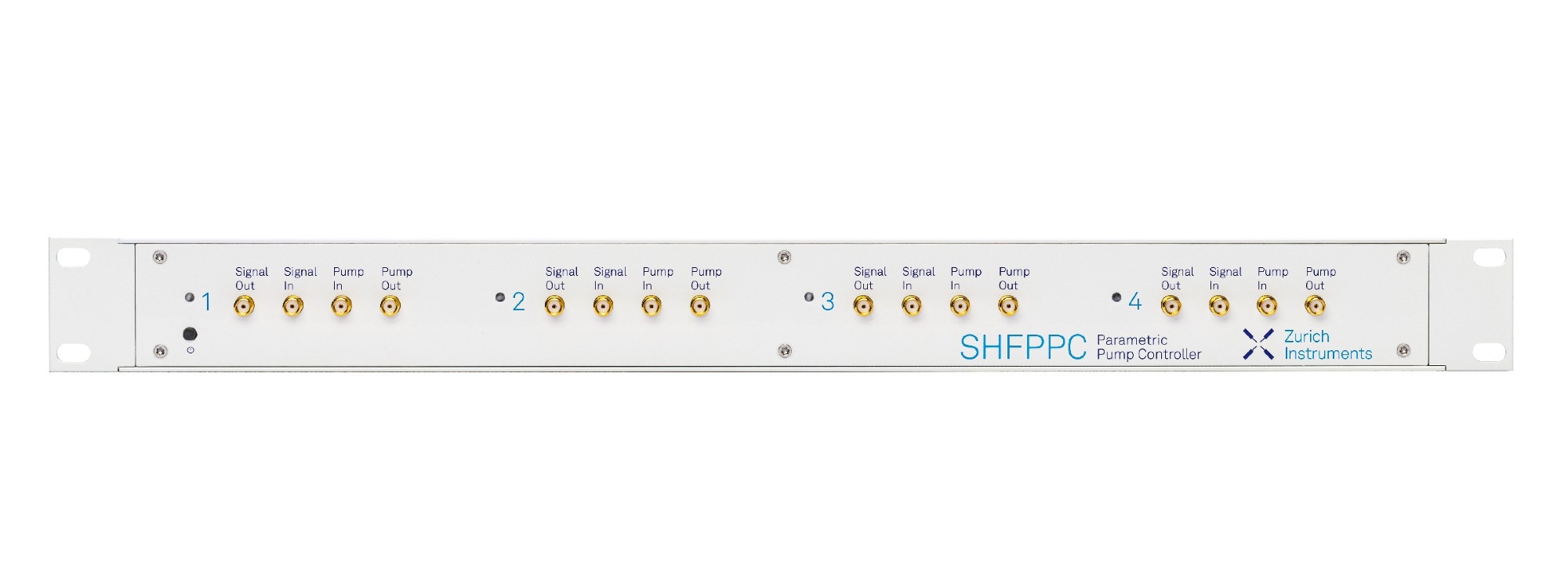With its latest product innovation, Zurich Instruments offers quantum computing researchers a fast track to unleashing the power of parametric amplification for qubit readout.
While being critical to achieve the high measurement speed and low error rates needed for quantum error correction, parametric amplification often requires dedicated control electronics for microwave signal conditioning. With the new SHFPPC Parametric Pump Controller, users have, for the first time, access to a fully integrated solution, eliminating the need for home-built designs, and automating a core piece of parameter tuning.

Image credit: Zurich Instruments
Application
High-fidelity and fast qubit readout are critical for feedback operations in quantum computing. Near-quantum-limited parametric amplification is the state-of-the-art technology to maximize performance in these parameters, without compromising on quantum processor or algorithm design. In many implementations of parametric amplification, it is necessary to cancel the high-power pump tone required to drive these amplifiers in the readout return signal, to avoid degrading the performance of the subsequent amplification stages. Zurich Instruments offers the first commercial solution to that challenge, eliminating the need to design a home-built setup for tuning the amplitude and phase of a microwave tone. This approach also lowers the susceptibility to temperature drifts compared with using a home-built solution. With the SHFPPC, Zurich Instruments offers you an automated, application-specific solution that is quick to set up and operate, allowing for rapid characterization and stable operation of parametric amplifiers.
Concept
SHFPPC Parametric Pump Controller
Video credit: Zurich Instruments
The SHFPPC integrates the key functionality needed to control travelling-wave parametric amplifiers (TWPA) or lumped-element Josephson parametric amplifiers (JPA): microwave pump tone generation, return signal conditioning and amplification, and automatic cancellation of the residual pump tone in the return signal. Equipped with either 2 or 4 readout channels, the SHFPPC pairs optimally with Zurich Instruments' solutions for qubit readout in a Quantum Computing Control System (QCCS).
The SHFPPC features high-power and low-phase-noise microwave sources to generate a pump tone from 1 to 12 GHz. An automatic leveling control unit ensures stable operating conditions over long periods of time. The signal conditioning units feature an operating frequency band from 5 to 10 GHz and an automatic self-cancellation of the pump tone at the touch of a button. For rapid tune-up, characterization, or performance monitoring it is possible to generate a probe tone signal together with a pump tone signal on a single output port.
System Integration
As the newest addition to Zurich Instruments' QCCS offer, the SHFPPC helps leverage the dedicated signal processing capabilities of the SHFQA Quantum Analyzer or SHFQC Qubit Controller. The SHFPPC can be integrated both into new or existing setups. Seamless control over a single software interface for the whole QCCS is guaranteed thanks to the LabOne software, the new LabOne QCCS Software, and the LabOne Python APIs, allowing for intuitive experiment tune-up and rapid automated calibration.

Image credit: Zurich Instruments
--------------
To read more about the new Zurich Instruments SHFPPC Parametric Pump Controller, including the complete list of its specifications, visit www.zhinst.com and the SHFPPC instrument page. To arrange a live demo, write to [email protected].
About Zurich Instruments
Zurich Instruments makes cutting-edge instrumentation for scientists and technologists in advanced laboratories who are passionate about phenomena that are often notoriously difficult to measure. The company’s core offering includes lock-in amplifiers, impedance analyzers, arbitrary waveform generators, and the first commercially available quantum computing control system.
Zurich Instruments brings innovation to scientific instrumentation and quantum control systems in the medium-frequency (MF), ultra-high-frequency (UHF) and now also super-high-frequency (SHF) ranges by combining frequency- and time-domain tools within each of its products. This approach reduces the complexity of laboratory setups and unlocks new measurement strategies.